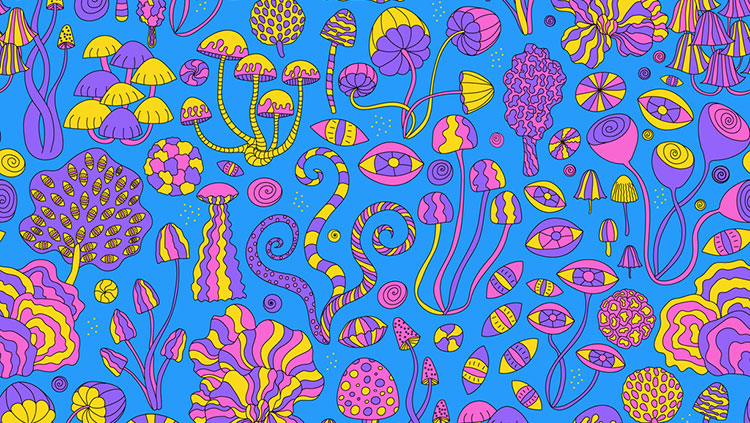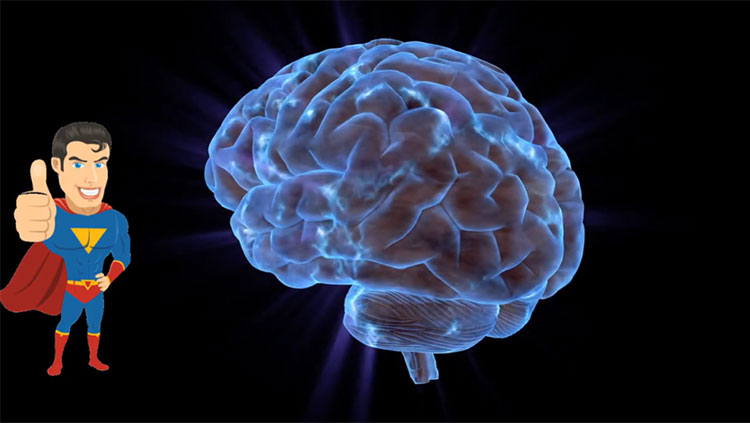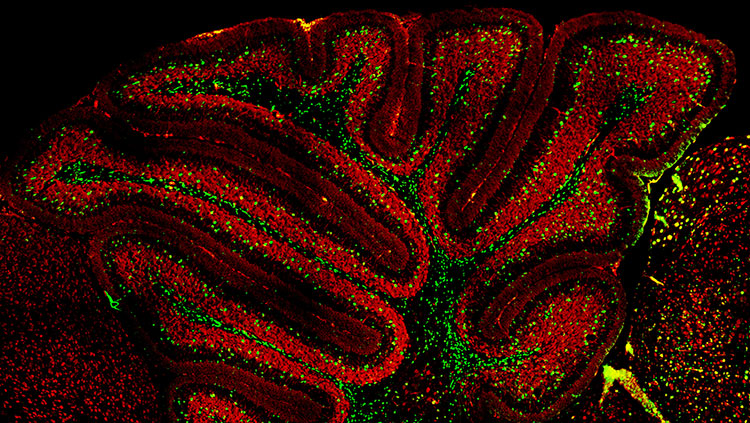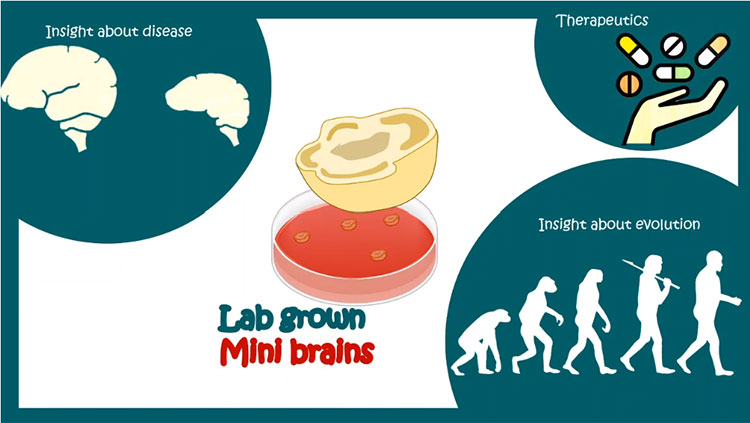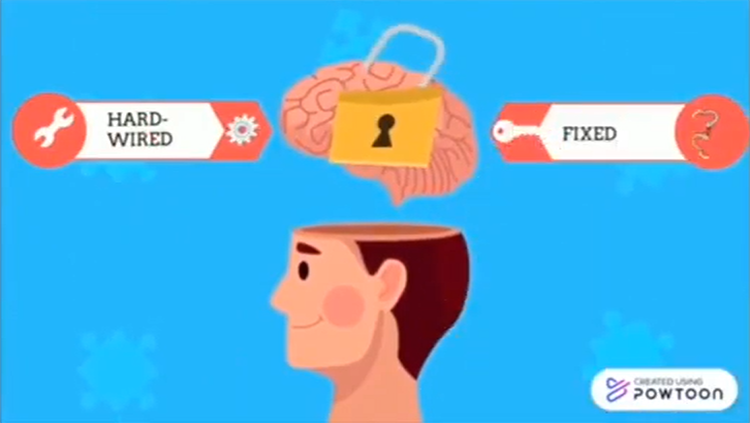Psychedelics Can Reopen Periods of Heightened Brain Plasticity
- Published15 May 2024
- Author Karen Hopkin
- Source BrainFacts/SfN
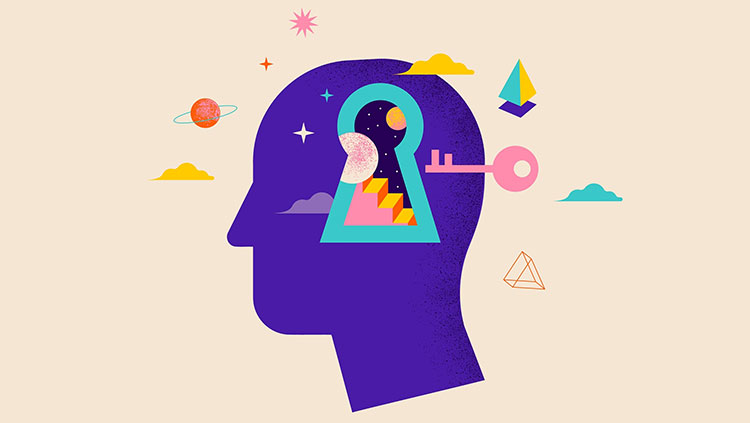
Childhood is a time of learning. During this critical period of development, neuronal connections are built, strengthened, or removed as an individual interacts with the world. This capacity to tailor neuronal connectivity based on experience diminishes with age, making it harder to learn a new language or take up a musical instrument.
A research team at Johns Hopkins University led by Gül Dölen, who’s now at the University of California, Berkeley, discovered psychedelic compounds may be able to restore the brain’s youthful pliability. The results, published in Nature in June 2023, suggest psychedelics, drugs which temporarily alter a person’s mood, thoughts, and perceptions, can act as “master keys” to reopen so-called critical periods of enhanced neural plasticity — findings that could facilitate new techniques for mental health treatments.
“Psychedelics have been around for centuries and have been used by many cultures,” says Takao Hensch of Harvard University’s Center for Brain Science. “Gül has produced a rodent model in which these compounds can be studied to determine, at a circuit level, how they work.”
Reestablishing Youthful Social Learning
Dölen’s psychedelic odyssey began at Hopkins in 2014, when she identified a critical period when young mice learn the rules and rewards of social engagement. She thought studying this window of time, which stretches into the mouse equivalent of adolescence, could yield clues about the pathophysiology of addiction “because social reward is thought to be one of those natural rewards that drugs of abuse coopt,” she says.
To reawaken this social craving in adult mice, Dölen enlisted the help of MDMA, also known as ecstasy: a synthetic drug which acts as a stimulant and hallucinogen. Although this drug is not considered a “classic psychedelic” in the same category as LSD, it can induce psychedelic effects — as well as intense feelings of affection. “People who take MDMA love to go to raves and flop into 60-person cuddle puddles,” says Dölen.
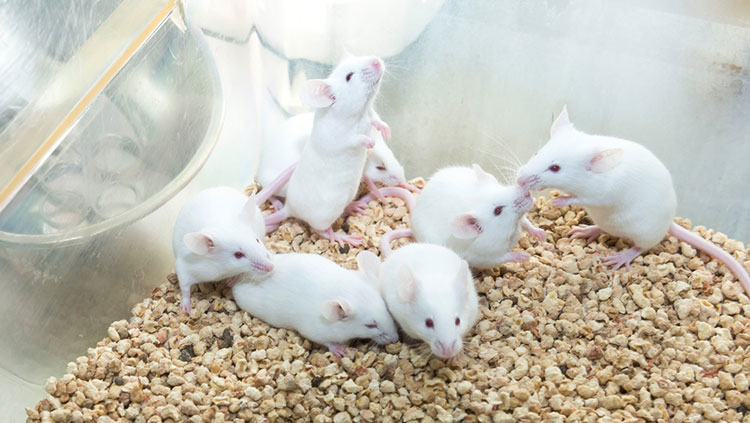
She and her lab found MDMA made adult mice act like teens, making them more likely to choose environments they’d come to associate with other animals and rendering their brains as responsive to oxytocin, a hormone and neuromodulator promoting social bonding, as they had been in their youth.
Cocaine, a stimulant also inducing euphoria, did not foster the same type of “prosocial” behavior, says Dölen, “which suggested that it’s not as if the animals got a party drug and remembered how they liked having a good time with their friends.”
Then came the surprise. When Dölen and her colleagues tested other hallucinogenic drugs — including classical psychedelics such as LSD and psilocybin, dissociative drugs such as ketamine, and the stimulant and hallucinogenic substance ibogaine — they were stunned to discover they all reopened the critical period for social learning just as well as did MDMA. “That was really a big surprise because we thought that MDMA worked because it has prosocial properties,” says Dölen. “But it’s not about that. So, we were wrong.”
New Experiences Breaking the Mold
Despite the differences in the way these drugs induce their psychedelic effects, Dölen says they all enhance “metaplasticity,” or the plasticity of plasticity — an effect not nearly as psychedelic as it sounds. Whereas plasticity refers to changes in the structure, connectivity, or activity of neurons, metaplasticity refers to the ability to trigger these changes. Researchers are still unsure whether changes in plasticity occur at the same time and to the same extent across psychedelics.
In Dölen’s setup, all the psychedelics changed how adult neurons responded to oxytocin. In the adult brain, oxytocin has no effect on plasticity, she says. “But in mice treated with psychedelics, oxytocin is once again able to induce plasticity, just like it does in the juvenile brain.”
The ability of drugs like MDMA to re-sensitize the brain to oxytocin could explain their effectiveness in helping to treat some behavioral aspects of disorders such as PTSD. “A lot of the time, people who’ve experienced trauma tend to blame themselves,” says Jennifer Mitchell of the University of California, San Francisco. “But having oxytocin on board seems to provide a lens of self-compassion. So, someone might say, ‘That was a horrible thing that happened to me … but it wasn’t my fault, and I don’t need it to define me.’”
In addition to rejuvenating neurons’ response to oxytocin, MDMA and the other psychedelics Dölen examined tweaked the activity of some 65 genes, about one-fifth of which impact the regulation and makeup of the extracellular matrix — material physically cementing or consolidating neuronal connections and circuits.
Dölen theorizes psychedelics might signal the brain to “hit the reset button,” setting off a series of changes loosening the extracellular matrix, restoring neuronal flexibility, and stoking metaplasticity. In this way, Dölen says, psychedelics can act as a sort of “master key” for unlocking critical periods.
Setting Out Proper Trip Treatment Plans
Interestingly, the amount of time the critical period window stays open in mice is proportional to the length of time the drugs are known to induce subjective effects in humans.
“Psychedelics like ketamine, which have a very short acute subjective effect that lasts about 30 minutes to two hours at most, kept the critical period open for 48 hours,” says Dölen. “Whereas ibogaine, which produces this crazy long trip that in humans lasts three days, keeps the critical period in mice open for more than a month.”
To Dölen, this relationship to the trip is part of the package. “If you engineer these drugs to have a shorter, acute subjective effect, which is what a lot of companies are trying to do,” she says, “you're going to get rid of the therapeutic efficacy of these drugs.”
“The drugs have to be administered in a very particular setting and by people that are seasoned and trained to walk you through the experience.”
But the duration of the effect also calls for caution because individuals will be particularly vulnerable as their brains are being rewired. “When we administer MDMA in a therapeutic environment, patients typically spend eight hours with at least two therapists and support staff, and then maybe spend the night in the treatment center before having another therapy session in the morning,” says Mitchell. “But what if the critical period is open for weeks? We can’t monitor somebody for six weeks to keep them safe from unwanted effects.”
Furthermore, which critical period a psychedelic will reopen may depend on the setting in which the drug is administered. For example, to relearn how to walk after a stroke, a person might take MDMA in conjunction with intensive physical therapy.
Selecting an appropriate setting could also boost the effectiveness of psychedelics as they work their way through clinical trials, says Dölen. “It’s very, very satisfying to me to hear from clinicians that the mechanism we uncovered is guiding the way that they are redesigning how they implement these drugs.”
CONTENT PROVIDED BY
BrainFacts/SfN
References
Nardou R., Lewis E.M., Rothhaas R., Xu R., Yang A., Boyden E., Dölen G. Oxytocin-dependent reopening of a social reward learning critical period with MDMA. (2019). Nature, 569, 116-120. https://doi.org/10.1038/s41586-019-1075-9
Nardou, R., Sawyer, E., Song, Y.J., Wilkinson, M., Padovan-Hernandez, Y., de Deus, J.L, Wright, N., Lama, C., Faltin, S., Goff, L.A., Stein-O’Brien, G.L., Dölen, G. (2023). Psychedelics reopen the social reward learning critical period. Nature, 618, 790–798. https://doi.org/10.1038/s41586-023-06204-3
NIDA. (2024). Psychedelic and Dissociative Drugs. https://nida.nih.gov/research-topics/psychedelic-dissociative-drugs
NIDA. (2022). What is MDMA?. https://nida.nih.gov/sites/default/files/1763-mdma-ecstasy-abuse.pdf
Nuwer, R. (2023). The Psychedelic Scientist Who Sends Brains Back to Childhood. WIRED. https://www.wired.com/story/the-psychedelic-scientist-who-sends-brains-back-to-childhood/
Miller, N. (2024). Reporting on psychedelics research or legislation? Proceed with caution. The Journalist’s Resource. https://journalistsresource.org/home/psychedelics-research-roundup/
What to Read Next
Also In Brain Development
Trending
Popular articles on BrainFacts.org



